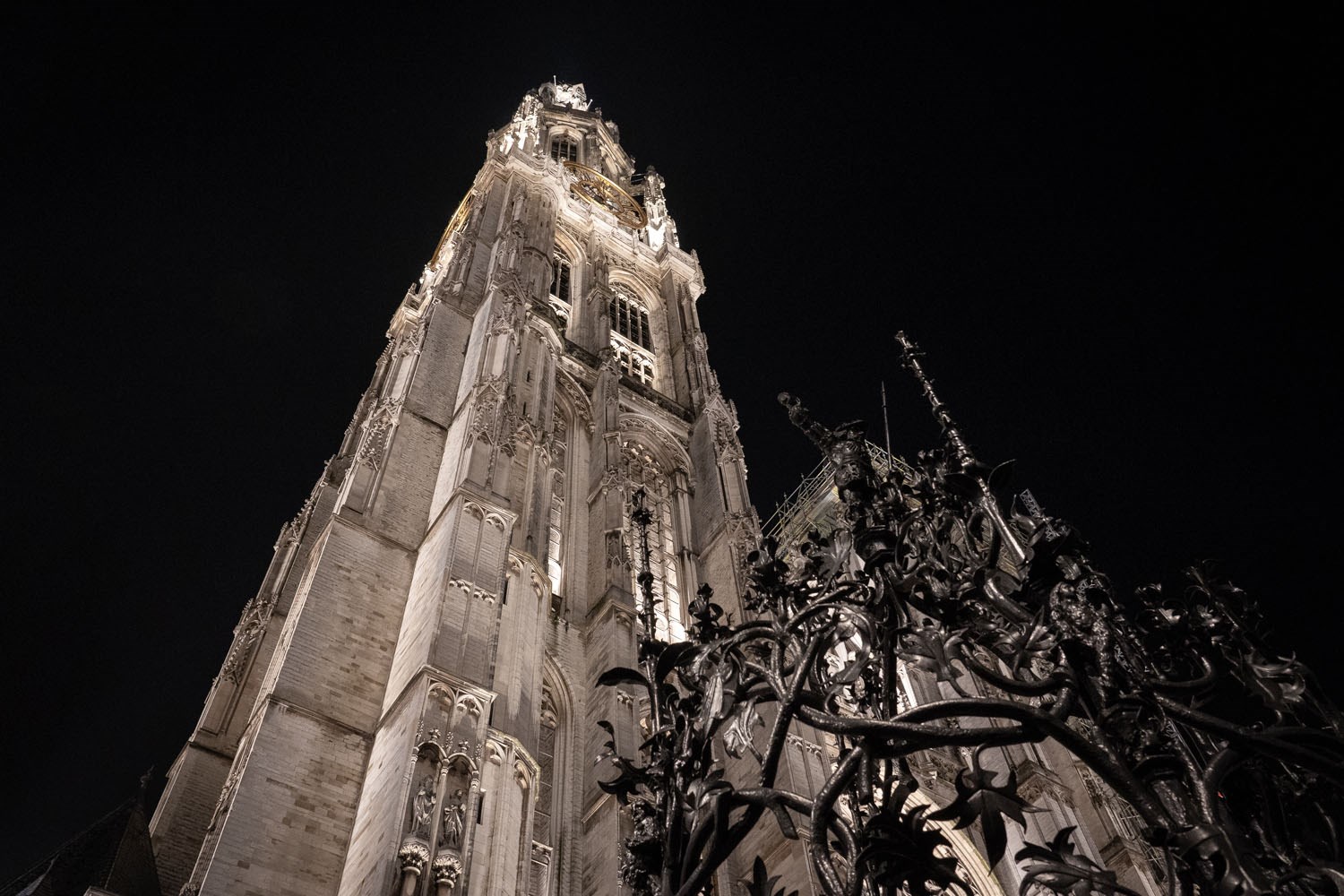This is a dynamic white light project. In your opinion, does colour changing light have an unexpressed potential? What value can color take on in the enhancement of a modern or historical installation? Are there contexts in which the use of colored light is preferable?
Unfortunately, this is not a dynamic white light project. It was initially planned as such, but then, due to budgetary requirements, it was decided to work either with 3000K and 4000K white light according to the different construction materials of the cathedral. I think that the dynamic white configuration is very interesting, and it could have been the optimal choice for this project. The cathedral itself appears much clearer if seen from the Groenplaats than it looks from the Handschoenmarkt, even though the stone of the walls it’s the same, as the surrounding environment is different in colour, height, and vegetation. Dynamic white fixtures would have given the possibility to modify the perception of the building not only on the basis of these environmental factors but also according to its different functions. The possibility of fine tuning the shades of white, choosing a cooler or warmer tone according to different areas would have also passed a message on a sensorial level, adding value to the identity of the place.
Personally, I don't like colour in the permanent lighting of historic buildings, I think it is interesting as a temporary or occasional intervention. In any case, the choice depends on the planning and targets of the public administration which define the city's night image.
How important is lighting design in a lighting project, regardless of its size, location and features?
To design a building you need a project done by an architect, an engineer or a group of professionals. For a lighting project you need a lighting designer or consultant, preferably an independent one. Of course, in the case of a construction, the obligation to draw up a project is linked to well defined laws and not to an occasional requirements (as for lighting projects and unfortunately not for all types). I hope that, sooner or later, social and technological changes will bring new tools and new opportunities for lighting designers. For me it is quite incomprehensible that public administrations take care of the daytime aspect of the city and leave out the night one. The nocturnal scenography is confined by rules and laws linked mainly to budgetary aspects or energy saving plans that do not take into consideration the positive effects of a nighttime illumination on human perception as well as the improvement of the quality of life. Each public lighting intervention should be based on a lighting plan coordinated on a regional basis so that the result is coherent and has strategic a value.
